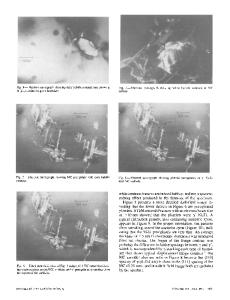Corrosion Behavior of Plasma-Nitrided 904L Austenitic Stainless Steel in Hydrofluoric Acid
- PDF / 2,139,945 Bytes
- 10 Pages / 593.972 x 792 pts Page_size
- 10 Downloads / 316 Views
ÓASM International 1059-9495/$19.00
Corrosion Behavior of Plasma-Nitrided 904L Austenitic Stainless Steel in Hydrofluoric Acid Ruyi Jiang, Guobo Zou, Wei Shi, Yu Liang, and Song Xiang (Submitted May 2, 2018; in revised form January 9, 2019) A new type of high-chromium nickel molybdenum super austenitic stainless steel, 904L, has excellent corrosion resistance in acidic environments. However, the service life of 904L decreases significantly in a mixed acid system that includes hydrogen fluoride and sulfuric acid. In this article, different plasma nitriding processes were used to modify the surface of 904L stainless steel. X-ray diffraction was used to analyze the phase composition after nitriding; scanning electron microscopy and atomic force microscopy were used to examine the surface morphology after nitriding; electrochemical noise and electrochemical methods were used to study the localized corrosion behavior and the damage mechanism of the ion nitride layer; and the effect of the plasma nitride layer on the corrosion resistance was explored. The results show that with increasing nitriding time, the thickness of the nitride layer increased. Ion nitriding resulted in the coarsening of the 904L austenitic stainless steel surface. A long nitriding treatment time resulted in the precipitation of CrN in the modified layer, depleting the chromium from the matrix and remarkably reducing the corrosion resistance. Keywords
904L, corrosion resistance, electrochemical noise, localized corrosion, plasma nitriding
1. Introduction A new type of high-chromium nickel molybdenum super austenitic stainless steel, 904L, has excellent corrosion resistance in a sulfuric acid environment (Ref 1-3). Previous studies have explored the differences between 316L and 904L, and 904L has a higher resistance to fluoride acid corrosion due to its higher nickel content (Ref 4). However, while the service life of 904L is 5-10 times longer than that of 316L in a fluorinecontaining strong acid system, i.e., using fluosilicic acid to produce anhydrous hydrogen fluoride, 904L still cannot satisfy industrial requirements. Improving the corrosion resistance and mechanical properties of 904L in fluorine-containing strong acids by plasma nitriding is important for industrial applications. Ion nitriding is a surface engineering technology that is extensively used to introduce nitrogen into stainless steel without smelting. Studies by Lei and Picard et al. showed that a metastable nitrogen supersaturated austenite (cN phase)-modified layer with a high pitting resistance and no CrN precipitation could be obtained by nitriding materials at temperatures of 450 °C or less (Ref 5-9). Additionally, some researchers proposed a theoretical model for nitriding to improve the corrosion resistance (Ref 10-12). However, researchers most commonly study AISI300 and 200 series austenitic stainless steels (Ref 5, 8, 13-20), and Ruyi Jiang, Guobo Zou, Wei Shi, Yu Liang, and Song Xiang, College of Materials and Metallurgy, Guizhou University, Guiyang 550025, China; and Guizhou M
Data Loading...











